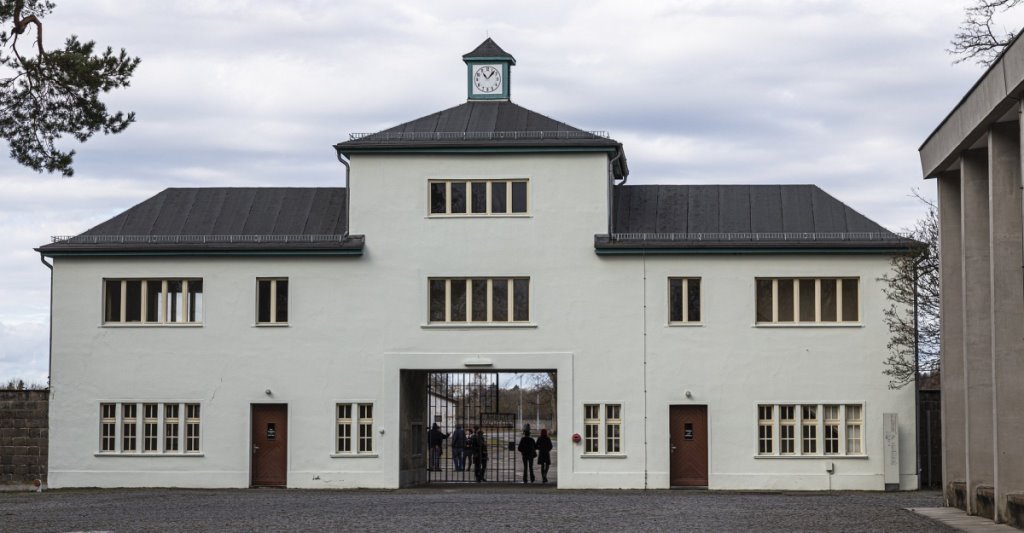I’ve known for a few decades that Josef Jakobs claimed to have been imprisoned in Sachsenhausen concentration camp. I’ve always wondered if his claim was true. Lt. Col. Robin W.G. Stephens, commandant of MI5’s secret interrogation centre certainly believed it was true. But it’s always been a niggling question in my mind. Every year, however, new data emerges and perhaps this is the year that I can lay the question to rest, once and for all.
Sachsenhausen Concentration Camp
Built in 1936, Sachsenhausen was one of the first concentration camps constructed by the Nazis. Sachsenhausen was only 35 kilometres north of Berlin, located near the town of Oranienburg, which was also the administrative headquarters of the concentration camp system. Sachsenhausen was used as a training centre for the SS (Schutzstaffel) personnel who would be sent to other camps. It was also a place in which the most efficient and effective execution methods were perfected. It’s layout, an equilateral triangle with a semi-circular roll-call area, also became the standard for other concentration camps.
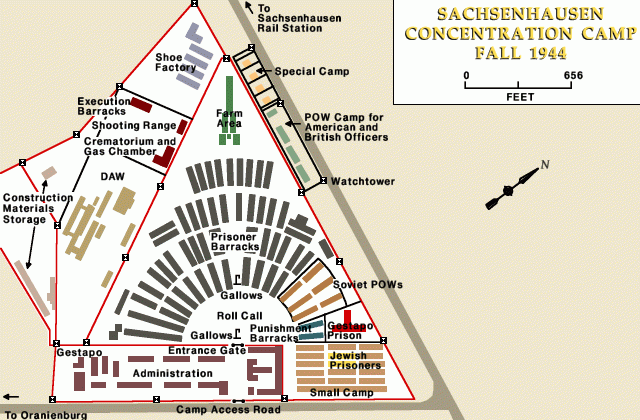
From USHMM site.
The camps front entrance gate included the infamous phrase “Arbeit Macht Frei” (Work makes (you) free). Between 1936 and 1945, over 200,000 inmates would pass through the gates of Sachsenhausen. Some of them would survive, but over 30,000 would perish within the confines of the camp, victims of exhaustion, disease, malnutrition or pneumonia. Many others were executed or died during “medical” experiments.
Some inmates at the camp worked at a nearby brick works or for German manufacturers such as Heinkel (aircraft manufacturer), AEG (Allgemeine Elektricitäts-Gesellschaft AG – electrical manufacturer) and Siemens (electronics manufacturer – my maternal grandfather worked for Siemens from 1928 onwards). Other inmates, particularly graphic designers, typographers, engravers, printers and those with banking experience, worked in a counterfeit operation at the camp, code-named Operation Bernhard. Inmates were forced to produced forged American and British currency as part of a bigger plan to undermine the value of those two economies. Apparently, forged British banknotes were put into circulation in 1939 (via Operation Andreas) but the Bank of England only began to identify them in 1943, calling them “the most dangerous ever seen”, a testament to the skill of the Sachsenhausen inmates. As an aside, the story of Operation Bernhard was told in a 2007 movie, The Counterfeiters.
Initially, inmates of the camp were German citizens, including: political opponents of the Nazi regime, members of groups declared by the Nazis to be racially or biologically inferior, such as Jews, Sinti and Roma, and homosexuals, as well as so-called “career criminals” and “antisocials”. After the outbreak of the war, the camp received tens of thousands of people who had been deported from the occupied territories including political opponents of the Nazi regime of the collaborating governments, foreign forced labourers and Allied prisoners of war.
Jailed for Passport Fraud
Josef Jakobs certainly fit the bill for a “career criminal”. After closing his dental practice in 1933 due to economic hardships, Josef tried his hand at various money-making ventures. He became a travelling salesmen for a Jewish publishing firm as well as for the Mercedes typewriter company. He also tried to import tinned foods from Spain but ran into trouble with the authorities as he did not have an import/export license. In 1934, he and a friend spent several months in Switzerland smelting counterfeit gold. While initially making out like bandits with several successful sales, they were eventually caught, arrested and imprisoned for two and a half years. At the end of his sentence, in mid-1937, Josef was deported from Switzerland back to Germany. The prison term had done nothing to reform Josef and he quickly became involved with a German lawyer, Jürgen Ziebell, who ran a black market passport scheme. Josef recruited Jewish clients for Ziebell, who then fleeced his victims in return for providing them with forged foreign passports or visas. Most of the clients seemed to have believed that they were receiving legitimate documents and only found out that they were carrying forged papers when they were arrested in other countries for passport violations (e.g. Holland, France).
In October 1938, the entire black market passport operation was rolled up when the Gestapo arrested dozens of individuals including Ziebell, Josef, several of their accomplices, and some of their Jewish clients. A prosecution document from the Generalstaatsanwalt (Attorney General) dated July 1939 notes that Josef was released on 6 February 1939 and then rearrested on 7 February 1939 and held at the Untersuchungsgefängnis (remand prison) at Alt Moabit 12a.
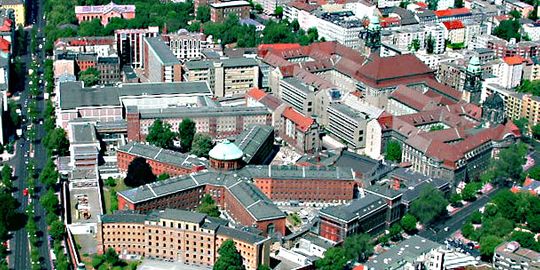
now the JVA (Justizvollzugsanstalt Moabit – Moabit Prison) (From Berlin.de site)
During his interrogations at Camp 020, Josef told the MI5 officers that he had been arrested in October 1938 and imprisoned by the Gestapo until March 1939. Some of Ziebell’s Jewish clients were released in March 1939 (e.g. Louis Georg Hagen) but it is unlikely that Josef was sent to Sachsenhausen at this point. The Generalstaatsanwalt document makes no mention of Sachsenhausen in July 1939, so it is likely that Josef was still being held at the Moabit prison at that time. Perhaps, with the outbreak of war, the prisoners were moved to Sachsenhausen. Josef claimed that he was released from the camp one year later, on 22 March 1940. Whether he was released because he had finished his sentence, or because he was recruited by the German Abwehr (military intelligence) is a mystery.
During his court martial, Josef expanded a bit on his time in Sachsenhausen and claimed to have been punished several times. He was subjected to strappado (hung from a tree or a pole with arms tied behind his back and unable to touch the ground) three times, for 30 minutes each. He also told the court that he had been sent to the punishment block where he was held in a tiny, solitary cell, with no bed or chair, for three weeks. He could, of course, have heard about these tortures from other individuals and it is interesting that these accounts do not appear in his interrogation reports from Camp 020. One does wonder if Josef was trying to play on the sympathy of the court.
Sachsenhausen Visit 2007
In 2007, during a trip to Germany, I visited the Sachsenhausen Memorial and Museum, at the former site of the concentration camp. A friend of mine had visited the camp a few years before and found the atmosphere evil and oppressive. I found it unbearably sad with a strong sense of “Remember how we died” and “Never again”. This was my first visit to a concentration camp, made even more poignant by the thought that my grandfather had been imprisoned here for months in 1939 and 1940.
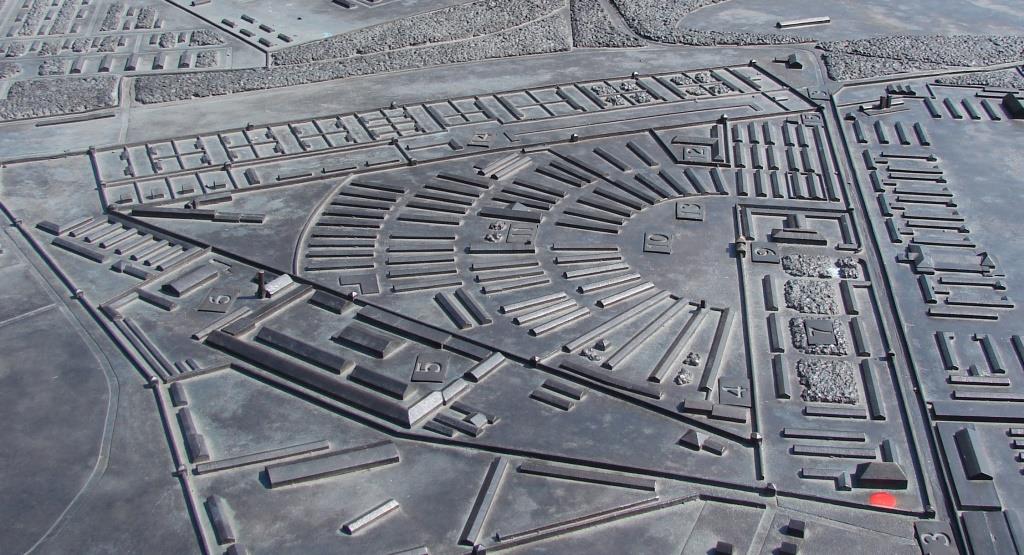
Triangular plan for Sachsenhausen, entrance gate at right. 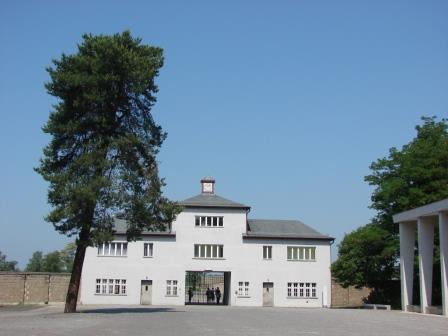
Entrance block to Sachsenhausen. 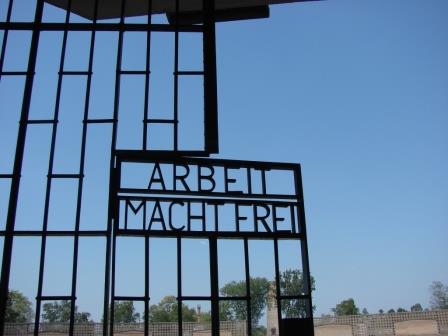
Entrance gate – Arbeit macht Frei. 
Memorial to those who perished. 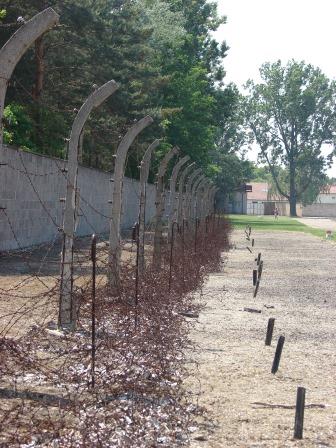
Barbed wire and gravel marking the shoot-to-kill zone before the camp wall. 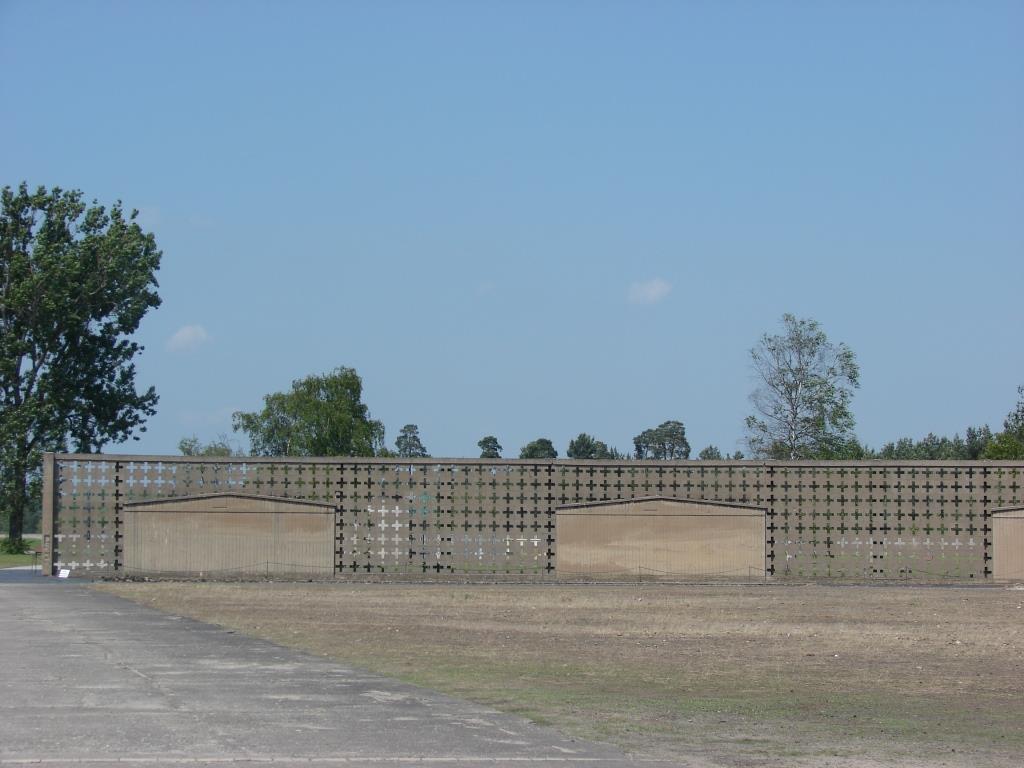
Outlines of former barracks. 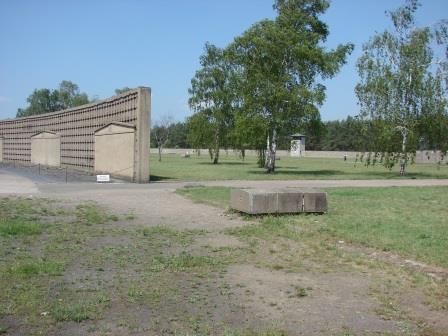
Former barracks removed during the Soviet era. 
Reconstructed barracks with bunks. 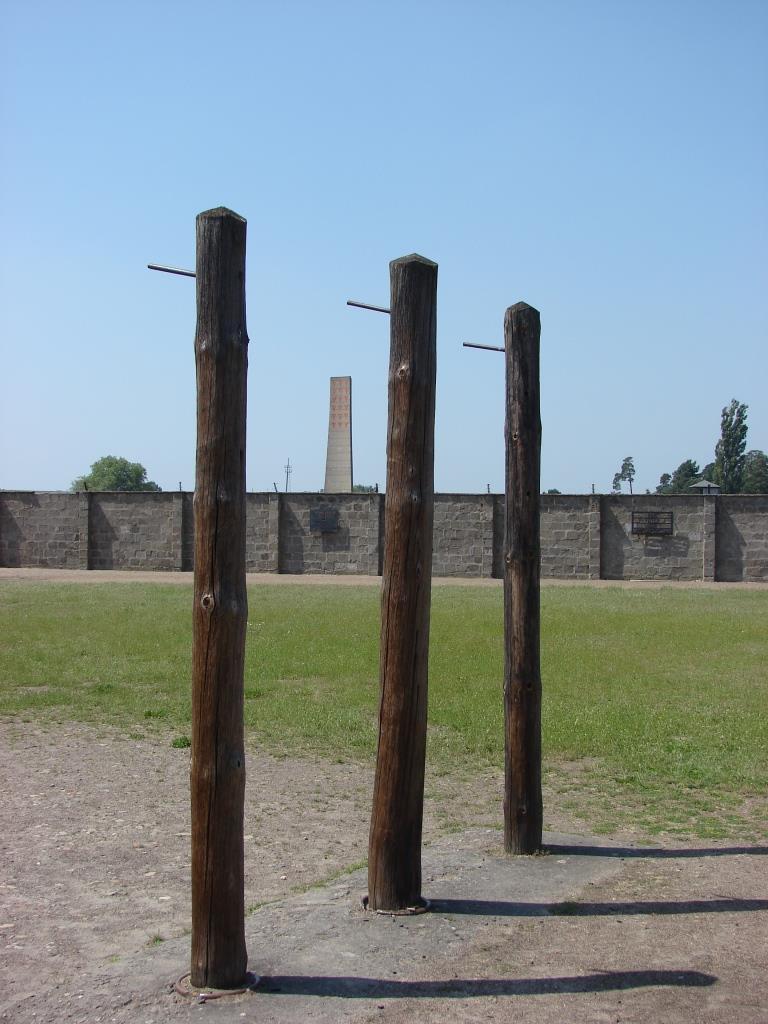
Strappado poles. 
A drawing by a former prisoner showing the Strappado torture. 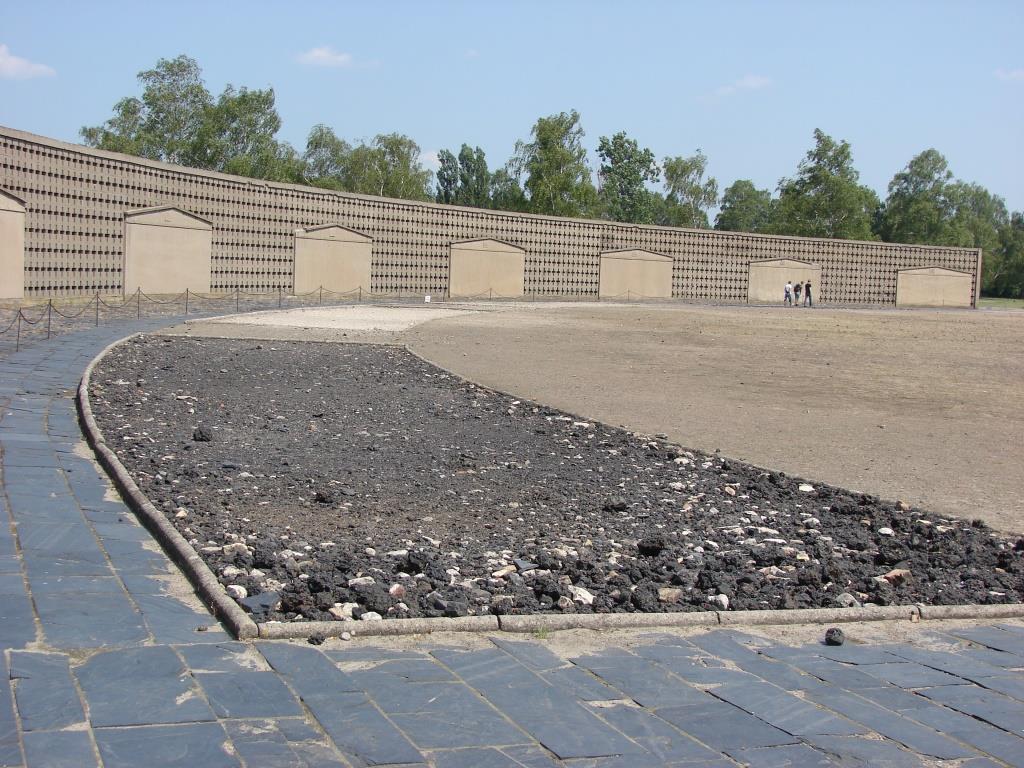
Schuhläufer-Kommando track composed of various materials – inmates would cover 20-40 km in a day testing various shoes/boots.
Sachsenhausen Archives
When I visited Sachsenhausen in 2007, there was no easily searchable online database of former prisoners. Part of the problem was that the camp had fallen within the Soviet zone after the end of the war, and many of the documents had been held in Russian archives for decades. A few weeks ago, I had another look at the Sachsenhausen Archives and… they actually seem to have the option of submitting a research request form! I filled out a request for Josef and we’ll see what comes of it. The archives temporarily closed in March 2021 due to Covid-19 and it’s not clear if the facility is open again. In any case, I don’t expect a quick reply but… fingers crossed that they might have something to confirm Josef’s time at the camp.
Sources
National Archives (Kew) – Security Service files and court martial documents on Josef Jakobs.
